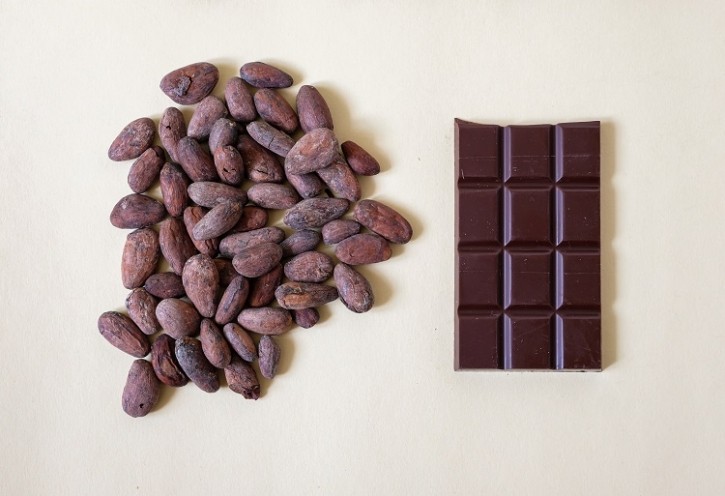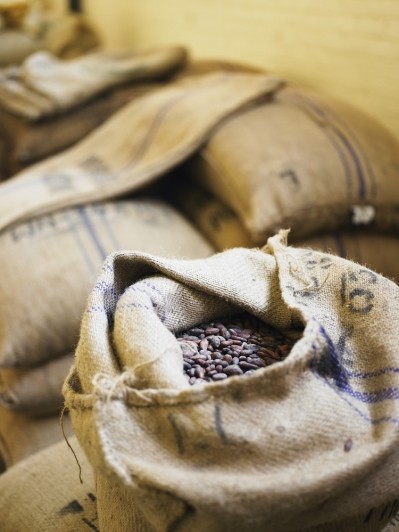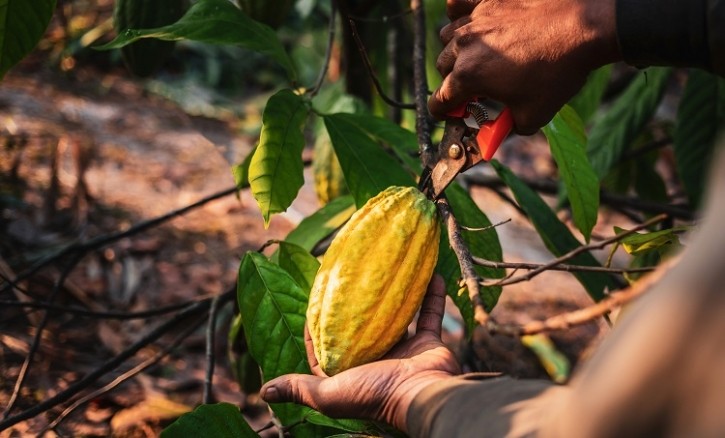The price of cocoa feels like something of a runaway train. As soon as the industry gets a handle on the situation, whoosh! Off it goes again.
Although the price has been on the rise since the beginning of last year, it’s recently skyrocketed to reach an eyewatering $10,760 (€10,039) per metric tonne.
Predicting how prices will fare in the future is a challenge, even for the experts. Understandably no one wants to pin their name to a prediction and be proven wrong, but some in the industry have indulged us with some crystal ball gazing.
Will cocoa prices continue to rise?
At the time of writing, the price of cocoa sits around €10,000 per metric tonne.
When asked whether the price of cocoa will continue to rise, tropical commodity product expert Steve Wateridge, who heads up research at Mintec’s Tropical Research Services, told us it will depend on how demand and supply respond to recent higher prices.
“The response would be much quicker if Ivory Coast and Ghana passed on more of the world price sooner to their farmers and if industry passed on higher prices sooner to consumers.”
Ingredients companies were hesitant to weigh in on cost predictions, but UK-headquartered Henley Bridge – which supplies chocolate and other ingredients to bakers, chefs, chocolatiers and gelato makers – agreed to gaze into its crystal ball.
“The price of cocoa has more than doubled in the last two months to just under £10,000/tonne. This is compared to just over £2,000/tonne 12 months ago – so nearly a five-fold increase,” explained commercial director Steve Calver.
“Most experts would not have predicted increases to these levels so it is very difficult to predict how high prices could go.”

Concerns have been raised that cocoa bean prices could rise further with the European Deforestation Regulation (EUDR) coming into force. The new law requires proof that any coffee, palm oil, beef, rubber, soy, wood, or cocoa products are deforestation-free.
Once the regulation is enforced (from 30 December 2024), the European Commission expects costs to increase for ‘high risk’ products, compared with ‘low risk’ ones.
When will the cost of cocoa come down?
The other big question is not whether cost of cocoa will continue to rise, but when it will fall.
Mintec’s Wateridge believes that if demand weakens materially and production responds to higher prices quickly, industry could see prices fall in Q2, and certainly in H2 of 2024. “However, if the fundamental situation deteriorates further as we enter the 2024/25 crop year, prices will go higher.”

Henley Bridge’s Calver notes there are indications the market could fall slightly towards the end of 2024 and early 2025, but told us it is ‘highly unlikely’ to drop back down to the levels seen just 12 months ago ‘anytime soon’.
“It is more likely to be a gradual decrease as speculators release their holdings bit by bit. More optimistic forecasts on the next crop, which is harvested October to February, would help calm the market.”
Cocoa supplier Barry Callebaut does not expect cocoa prices to continue to rise to the same extent. When reporting the company’s 2023-24 half-year results, CEO Peter Feld said he expects the price to stabilise somewhere lower than it is today, but higher than it was six months ago.
Will cocoa prices ever fall back to 2023 levels?
Whether cocoa prices will ever drop to early 2023 levels is not yet known, but if chocolate makers continue to use the same amount of cocoa in their formulations, it’s unlikely.
Mintec’s Wateridge offered a straight-up ‘no’ to the suggestion that prices could fall that far. “The two previous cocoa price spikes comparable – in percentage terms – to the current situation never saw a return to ‘pre-spike’ price levels and it’s unrealistic to expect that this time round.”
Henley Bridge’s commercial director is less certain, admitting it’s ‘very hard to say’ at the moment. “Some experts predict that high cocoa prices are here to stay and we need to get used to paying much more for our chocolate products.
“However, if global demand decreases due to manufacturers using less chocolate in their products or switching to more non-chocolate products, it may be possible to get to previous pricing levels.”
What is the primary driver of cost surges in cocoa?
Many factors have influenced the cocoa price hikes.
But the most dominant driver, according to Mintec’s tropical commodity product expert, is long-term structural decline in Ivory Coast and Ghana due to a combination of an ageing tree stock and lower yields from trees infected with Cocoa Swollen Shoot Virus (CSSV). The virus is spread by insects and severely damages trees.

For Henley Bridge’s Calver, the most dominant factor is concern around supply due to the large deficit in cocoa, especially from Ivory Coast and Ghana, due to the drought in West Africa.
“The other dominant factor is the continued impact of speculators in the market holding significant volumes of available stock on cocoa futures.”
